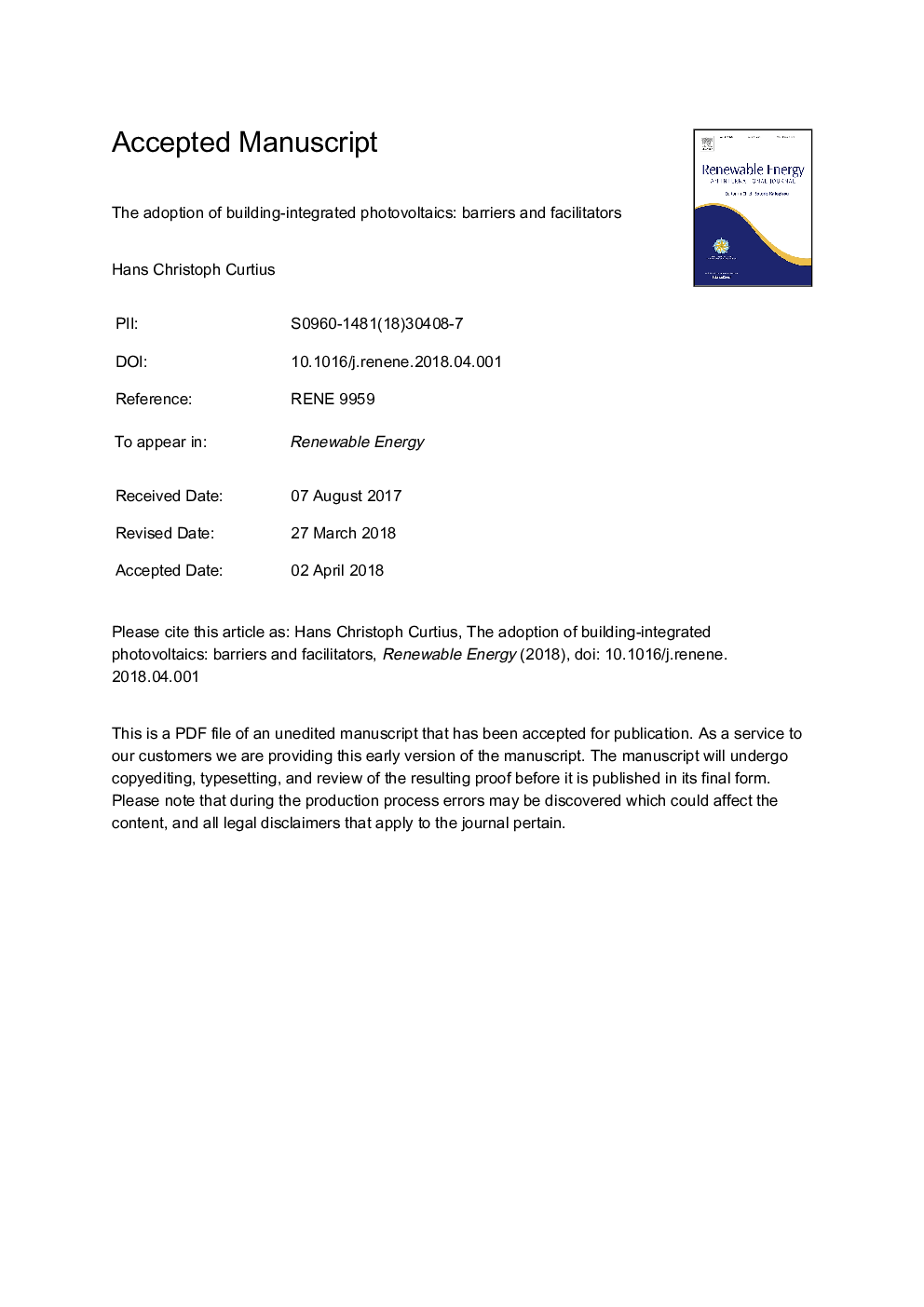| Article ID | Journal | Published Year | Pages | File Type |
|---|---|---|---|---|
| 6764315 | Renewable Energy | 2018 | 24 Pages |
Abstract
Widespread deployment of building-integrated photovoltaics (BIPV) could potentially lead to a multiplication of the area available for harvesting solar energy in densely populated countries. Despite its advantages to contribute to meeting renewable energy targets and substitute conventional building materials, the diffusion of BIPV has so far remained well below expectations. This paper investigates barriers to and facilitators of adoption based on 43 qualitative interviews with stakeholders across the BIPV value chain. It conceptualizes a framework that classifies the determinants of the adoption processes of renewable energy technologies and of BIPV in particular. Product-specific, stakeholder-specific and institutional barriers are identified. Central product-specific barriers include high initial costs and high complexity. The main stakeholder-specific barriers are low awareness of BIPV, and the reluctance of many architects to adopt BIPV. Institutional barriers refer to political risks. The paper derives recommendations for policy makers and marketers. Successful BIPV policies should create clear incentives for BIPV adopters, either in the form of financial support or inclusion of BIPV in building codes or labels. As for marketing, BIPV suppliers should develop targeted communication strategies towards building owners and architects and offer turn-key solar roofs in order to overcome concerns about the complexity of BIPV.
Related Topics
Physical Sciences and Engineering
Energy
Renewable Energy, Sustainability and the Environment
Authors
Hans Christoph Curtius,
